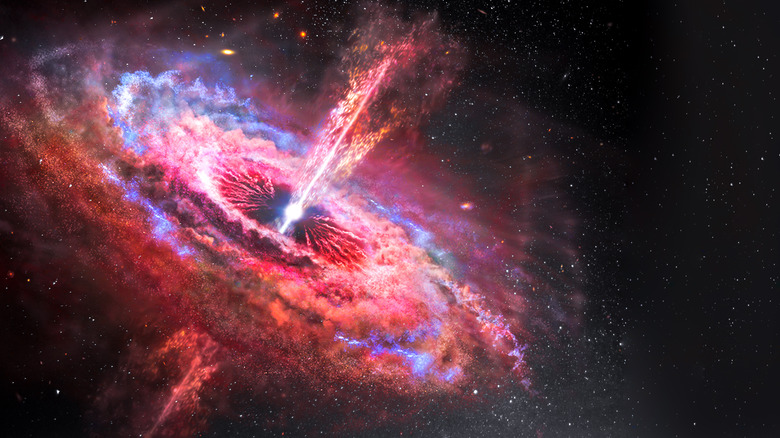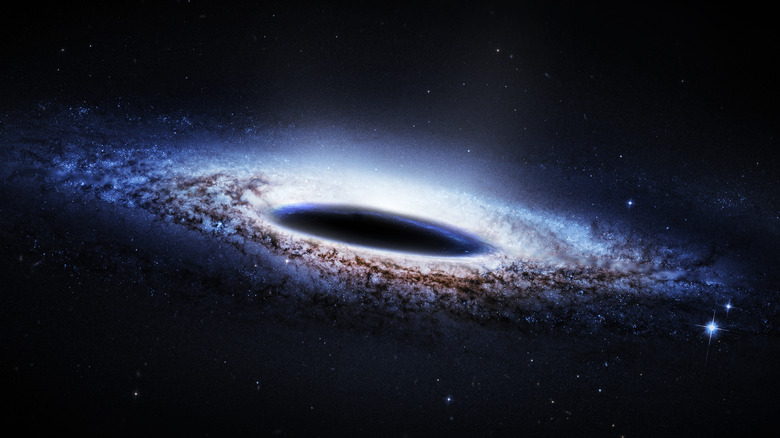What Happens To Time And Space Inside A Black Hole?
Black holes are born when massive stars 20 times our sun exhaust their nuclear fuel and collapse under the forces of gravity. When this happens, a supernova, one of the brightest explosions in our universe, is triggered, NASA explains. According to a 2022 study, there are 40 billion billion (4 + 19 zeros) black holes in the observable universe (via SciTechDaily). Black holes that have "three to dozens" of times the mass of our sun are called Stellar-mass black holes. On the other hand, supermassive black holes can have anywhere from 100,000 to billions of times the mass of our sun. A supermassive black hole is found in the center of most big galaxies.
Black holes are without a doubt the most mysterious astrophysical phenomenon of the cosmos. Albert Einstein, the master of space and time, predicted the existence of black holes in the early 1990s, The Print reports. The math and physics of Einstein's theory of general relativity proved that black holes should exist, but even the 1921 Nobel Prize laureate thought black holes were so weird that he doubted their existence.
To this day, NASA and the world's best top minds are still puzzled by black holes. Some black holes are extremely ancient, forming in the early stages of the universe. Others even contradict their established destructive reputation and give birth to stars (via NASA). But none of the black hole events are so puzzling and difficult to visualize as what happens to space and time inside these celestial bodies.
Space and time change places inside a black hole
Inside a black hole, once the event horizon is crossed, things begin to get really weird as space and time shift places and stretch to infinity, as Einstein online explains. This is the hardest concept to visualize. First, it must be understood that the gravitational forces of a black hole are so strong that once anything comes within its reach it can not escape its pull, not even light. In space, objects are always in motion, they move through space and time, bound by the law of inertia, Newton's first law. The law states that an object will continue to move until something stops it. But what happens when an object, let's say a moving star, is pulled by a black hole? When does the star stop moving?
When this star, moving freely across space and time, crosses the event horizon, one important thing happens: the laws of its movement through space and time change. Now the star can only move towards the black hole's "center" or singularity; it cannot escape. But what happens when the star reaches singularity? Does it stop moving? The model says that the star will continue moving in infinity, in a plane where space and time change places and space is stretched infinitely. This is why black holes can "swallow" massive-sized objects, making these large objects fit inside a small region inside the black hole.

